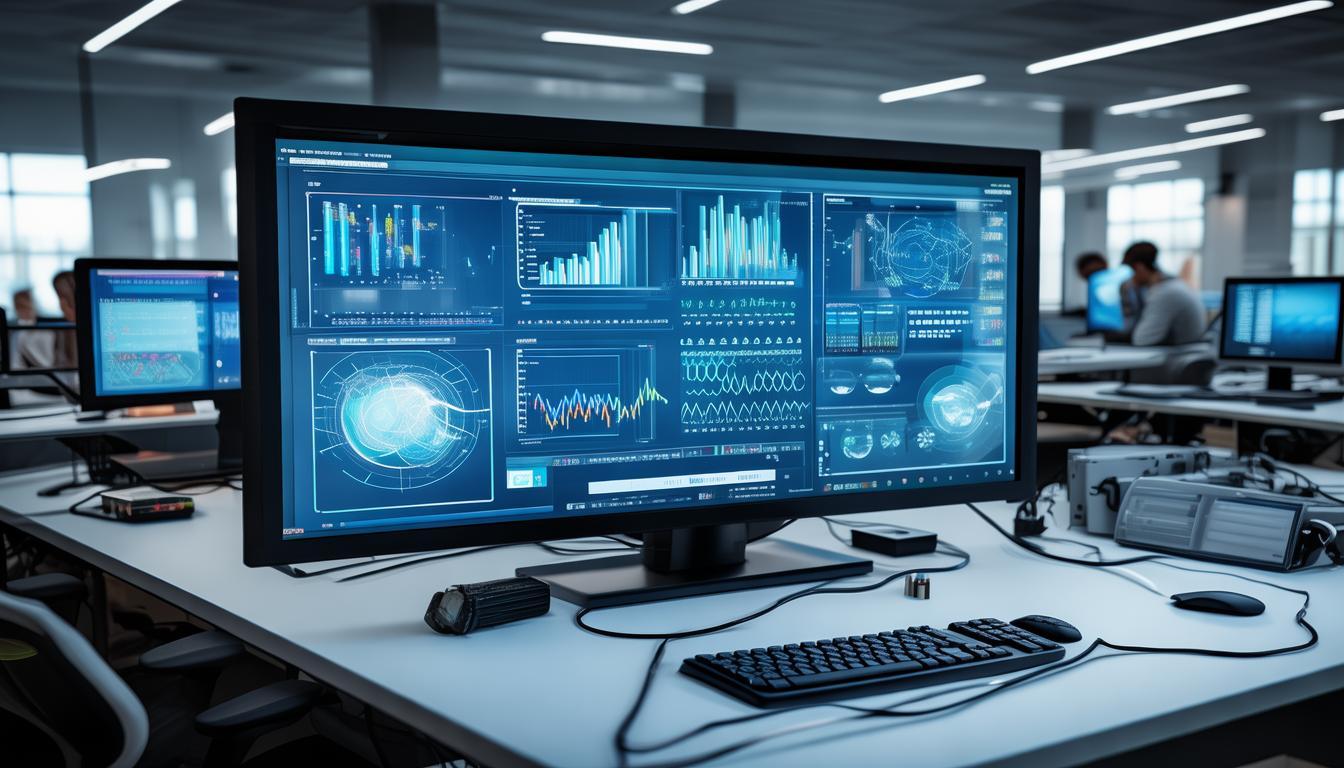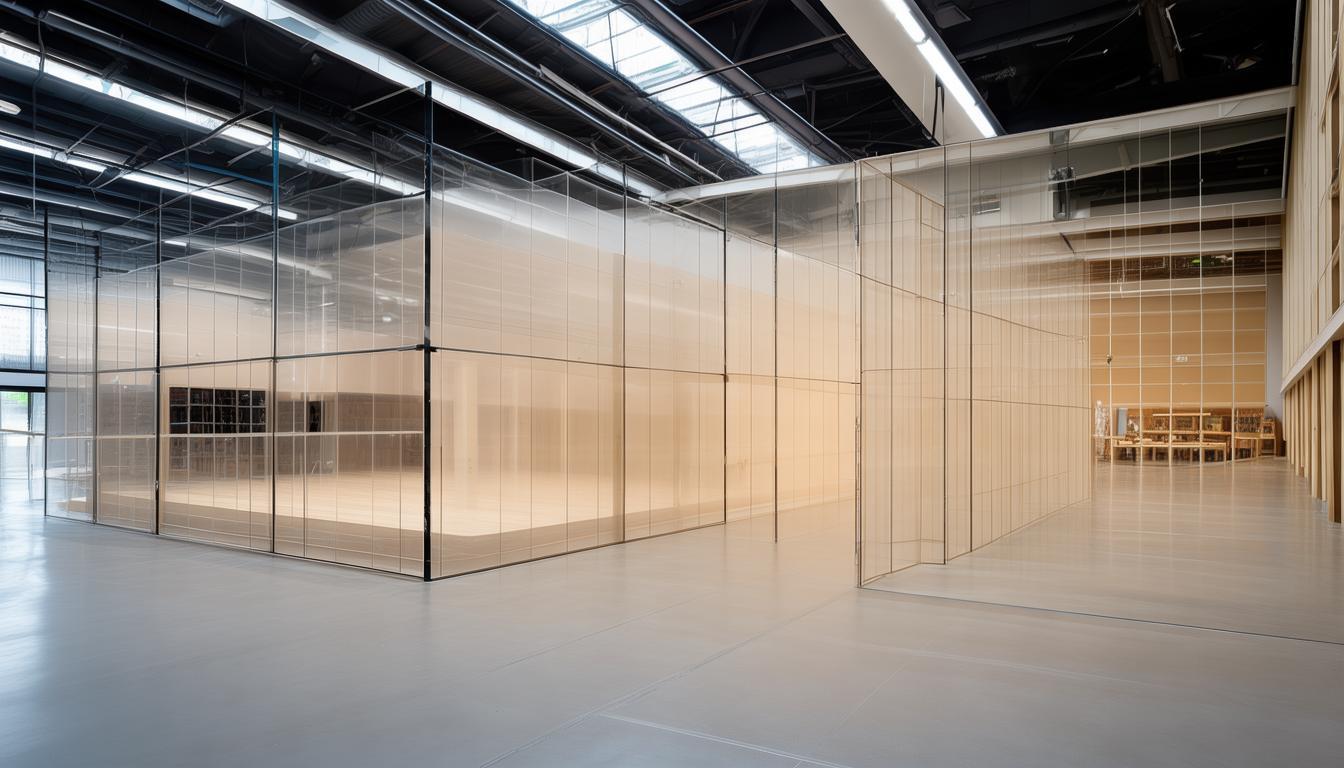In today’s architectural field, a particularly powerful concept has emerged – collective intelligent building ( )! What is collective intelligent building? It is the kind of building that integrates a large number of equipment and systems so that they can work together, make independent decisions like an organic whole, and give full play to the overall effectiveness.
This kind of building has many strengths
Advanced comprehensive sensing system :
A large number of diverse and refined sensors are distributed in every corner of the building. For example, infrared sensors at doors and windows monitor people’s entry and exit, office acoustic sensors monitor noise, and shopping mall flow sensors control the number of people entering the store in real time. They can detect changes in the surrounding environment extremely accurately and provide accurate and detailed dynamic information to the building operation system in real time, which is equivalent to installing “super sensitive facial features” on the building! For example, scientific research data monitoring sensors allow experimental buildings to obtain ambient temperature data with an accuracy of 0.1°C and upload and analyze. The mall can adjust the volume of internal promotional music and light brightness according to the data of the traffic sensor at the door to attract customers.
1. The system is highly interconnected and interactive : Through the construction of a high-speed stable network and the application of advanced interface communication protocols (Ethernet interface, wireless LoRa protocol, etc.), the sensing devices are connected to each other and are connected to the control system (intelligent lighting system, HVAC system), so that data is efficient and stable. The control system can operate the equipment in a timely manner according to needs. Each subsystem is not an isolated information pool, but a collaborative body of close communication and sharing. For example, at some point the weather turns from cloudy to sunny, and the natural light becomes stronger. The photoelectric and light sensor group next to the window collects data and transmits it to the network and intelligent lighting systems, and dynamically adjusts the light and darkness of the indoor lights. For example, when infrared sensors in public areas pass by, this signal is transmitted to the temperature control device to adjust the air conditioning intensity. The number of people in the office area has increased, and the temperature sensor senses and transmits data to power supply equipment, and reduces power and saves energy.
2. Strong data analysis function :
Traditional storage and rapid analysis platform : Big data installs software (distributed computing Spark framework and storage suite Flume) on the functional module architecture (computing processor, distributed data server hardware platform) to realize ultra-large-capacity data storage (several PeB-level data volumes), and analyzes and processes in real time, filters valuable data, and then makes decisions by the decision center.

Complex processing intelligent model library : a set of analysis models built on the basis of artificial intelligence algorithms and machine learning kernels (neural networks, genetic evolution algorithms and other “black box” intelligent algorithm operation modes)! When a new data input is trained and verified by dynamic logic algorithm model, the control scheme can be quickly output (optimized scheme sorting is for reference). For example, the daily electricity consumption of buildings is a huge data set Collective Intelligence Buildings. If you encounter sudden changes in electrical equipment, energy consumption characteristics during the complex period (daytime factory electricity consumption and large machinery production load), it is difficult for traditional algorithms to directly plan the optimal long-term energy allocation plan. At this time, you can import the “machine learning optimization control model (based on the basis of SVR algorithm for support vector regression)” to accurately model and optimize the control process to save 20%-30% power resources and improve the overall power output effect.
Very flexible in terms of functional characteristics, space, and docking with the surroundings :
1. Functional height adjustability :
With the help of programmable systems such as power, water supply and drainage, HVAC, audio-visual multimedia, and corresponding terminal devices, different modes and scenarios are set through the intelligent algorithm module of the software and chip, to easily and quickly convert functions or performance (one-click to realize that the restaurant is buffet style during the day, after work, the stage scene can be switched with one click, etc.; the office conference room can be equipped with instant conversion business seminars and high-end press conferences flexible and changeable scene functions). For example, the multi-function conference hall can instantly change the usage function status during formal commercial meetings, live streaming and film and television beat broadcasts to meet the needs of frequent conversion of multiple scenarios.
2. Multi-module linkage modular design and construction system :
The prefabricated and standardized process in the production process produces functional component units with rapid installation and transportation, extremely high quality, and can be extensible in various specifications or the entire complete system box block. For example, the prefabricated kitchen structure integrates waterway interfaces, operating countertops, storage cabinet components and other “modular furniture” can be combined and connected to water and electricity at the building site.
Modular splicing, like the principle of electronic building blocks, can be freely disassembled, flexibly installed, adjusted, and added or decreased as needed (the multi-functional conference room is expanded by inserting new panels + extending contours to build a large gathering venue; the practice of building partitions in some teaching areas, exhibition activities, etc.)

3. Flexible and flexible planning and layout : This is reflected in the movement of the internal walls of the building and the flexible conversion of structural components. The venue size can be adjusted and changed during the operation stage (the warehouse is transformed into a small performing arts hall, and the partition walls inside the classroom are freely combined to form a large classroom plus a small discussion group and a multi-space layout, etc.)
Answers to several concerns:
Q1: Is the initial investment very expensive?
Compared with the early construction of traditional buildings, it is even worse, because the cost of infrastructure such as sensor laying and network construction is relatively high! However, if the entire construction cost is allocated according to the actual service life, such as 60 years (usually speaking, traditional buildings will be demolished, modified or rebuilt in 30 to 40 years). At the same time, collective intelligent buildings will be greatly reduced due to high efficiency and energy saving, such as a significant reduction in energy consumption and a significant reduction in manpower (may reduce 40% of administrative service personnel costs and cost expenditures, saving labor costs), and the cost will be even lower in the long run! What’s more, the huge invisible benefits generated can continue to maintain or even enhance the commercial value of construction assets and property valuation under the enhanced soft experience of safety guarantee, indoor environment excellentness, comfort and other soft experiences! Therefore, we should analyze comprehensively and consider economic saving throughout the life cycle, which is very beneficial in the long run.
(There are also the last few lines that specifically answered “Is the later operation difficult or simple? Are there any high standards and high threshold restrictions on the operators?” and other similar questions! And embedded in the answer “Provide global procurement services for weak current intelligent products!”)
Q2: Is it difficult to operate later? Are there too high standards and high threshold restrictions for operators? When it comes to the collective intelligent building model, the overall operation in the later operation is relatively simple and worry-free. It is equipped with a highly intelligent integrated management platform! The design of the operation interface follows the graphic interaction logic, preset parameters and operating modes. It is as simple as setting automated tasks and operations with a smartphone. Basic personnel can basically master it with a little guidance and training, so it does not require that the operation must have super powerful technical capabilities. Complex in-depth management and advanced operation and maintenance can be reached with specialized technical teams, organizational services or using digital commissioned agency management and control platform solutions. Provide global procurement services for weak current intelligent products! If you encounter difficulties in purchasing, you might as well take a look. Collective intelligent buildings will really bring super convenience, efficiency and energy-saving experience to our lives and work! I believe that it will continue to shine in the construction field in the future!
Leave a Reply